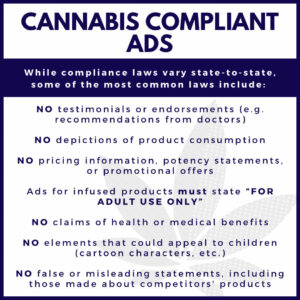Cannabis and CBD brands are new to the world of digital advertising. But digital advertising certainly isn’t new to the world of “vice” categories. But, unfortunately, when it comes to “vice” product advertising – alcohol, tobacco, and now, cannabis – one must do more than slap them on a billboard. Down to the packaging, if a brand can’t stick to the rules, they can’t sell their products.

Digital advertising, at its core, is aligned perfectly for these categories. Vice categories cannot be advertised everywhere to everyone, ultimately categorizing them as “vice.” Instead, they have a specific target audience that’s legally allowed to see their ads. And that’s digital advertising’s advantage. With its highly specific targeting capabilities, digital advertising offers brands the reach and frequency necessary to drive results.
Digital products like targeted email, where we have over one billion data files to assign to over 280 million email addresses and cross-reference against their physical addresses, ensure we target the right person.

Mobile advertising and geo-fencing allow us to create polygons for local dispensaries and target individuals who visit those dispensaries. As a result, we can advertise to those folks, and to similar individuals. And, in turn, we can grow the overall customer base for our clients.
Audio and video advertising allow us to reach individuals while listening or watching content that suggests they’re interested in cannabis and CBD products and programming.

Digital advertising also provides reporting and metrics details showing how many impressions led to in-store visits, purchases, and above-average revenue.

Google search and voice advertising has the potential to become a major channel as virtual assistants become pervasive. For instance, if someone asked Siri for a dispensary recommendation nearby, she could one day recommend your location.


Recent Comments